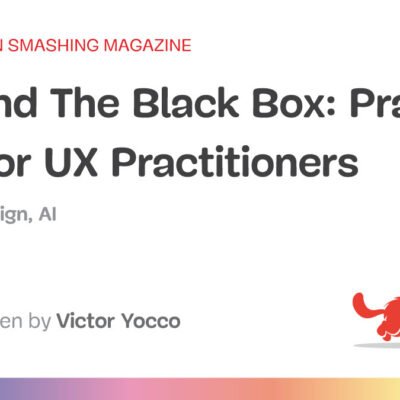Big Tech companies have been in a longstanding arms race for specialist AI talent. An AI engineering talent corridor between the likes of Microsoft, Apple and Google has seen such companies poach deep tech talent from one another for some time.
And while Big Tech can attract the best engineers from around the world with prestige roles and highly competitive salaries, there are still ways that businesses can compete to attract the right AI talent from remote working and upskilling to partnership programs and greater inclusivity.
The rapid development of GenAI has seen the number of job postings for this skillset increase by 61% in 2024, according to GlobalData’s Annual Jobs Analytics Signals Report, published in February 2025. The result was particularly striking when noting that the report found increases in job posting across all industries stood at 1.4% year-on-year.
The report notes: “Increased focus on GenAI, AI Agents, and Agentic AI roles boosted the demand for expertise in ChatGPT and Copilot.” Globally and across all industry sectors in 2024, new job postings were driven by roles for AI/ML engineers, cloud architects, and GenAI solution architects.
According to GlobalData chief analyst and practice lead, Rena Bhattacharyya, evolving foreign and economic policy, demonstrated by the implementation of President Trump’s widespread tariffs on 2 April, may impact the mobility of skilled AI professionals.
“It is unclear whether nationalistic tendencies will encourage experts to remain in their home countries. Preferences may not only be impacted by compensation levels, but also by international attention to recent US treatment of immigrants and guests, as well as controversy at academic institutions,” says Bhattacharyya.
But businesses can mitigate this global uncertainty, to some extent, by casting their hiring net wider to include remote working. Indeed, Thomas Mackenbrock, CEO-designate of Paris headquartered BPO giant Teleperformance says that the company’s global footprint helps it to fulfil AI skills demand. “We’re not reliant on any single market [for skills] as we are present in almost 100 markets,” explains Mackenbrock.
“One our largest footprints, in terms of head count, is India with more than 90,000 people there, an amazing labour pool now of talented individuals to tap into, and they’re all working remotely,” he says.
Teleperformance clients’ services centers, are by definition, 100% virtual. “So we can work within a global network. That’s the beauty of our business,” adds Mackenbrock.
Another approach is to increase the value of existing employees. Many companies face the decision of whether to upskill an existing workforce or outsource. According to The State of Tech Talent 2025 report by technology training platform General Assembly, “the companies that embrace a new and deliberate approach to talent recruitment and development will be the ones best prepared to compete and win in our AI future”.
Some 63% of hiring leaders in the US and UK surveyed say it’s more challenging to source candidates with adequate AI skills versus those considered for other tech roles. Closing this talent gap is proving more difficult in the US, with nearly one in five (18%) hiring professionals in the US saying it’s “significantly more challenging” to source AI-skilled candidates, compared to 9% in the UK.
Those surveyed are more likely to hire new employees and less likely to hire freelancers (18%) or outsource work (14%) and the share of organisations upskilling existing employees remains steady at 27%. The report recommends that upskilling is key. “Because companies want AI talent throughout their organisations, tech talent leaders must rethink and expand their AI training efforts to reach all employees,” notes the report.
Apoorv Iyer, executive vice president and global lead for HCLTech’s GenAI Practice says that the company’s approach has been based on upskilling and reskilling. “Instead of solely relying on external hiring, businesses need to equip their existing workforce with AI/GenAI capabilities across all levels,” says Iyer.
HCLTech, has invested in structured training ranging from chip design to AI/GenAI modelling to data science and engineering for its developers. Iyer also believes that education and early career programmes are also essential. “High school and university students should be exposed to emerging technologies like AI/GenAI and given the practical experience they need to ensure they’re ready to enter an AI-enabled workforce. We’ve been running early career programmes for many years and see them as an important lever for bridging the AI skills gap,” he says.
Semiconductor design company Arm is pursing a route of collaboration between academia, industry, and government to address AI skills challenges. Initiatives like the Semiconductor Education Alliance are developing education and skills frameworks to create high-quality curricula aligned with industry needs.
Additionally, Arm’s investments in academic partnerships, such as the recent funding of PhD students at the University of Cambridge’s CASCADE Centre, ensures a pipeline of AI-ready talent.
“The future workforce will need to combine human ingenuity with new and emerging AI technologies; going beyond just technical skills alone,” says Khaled Benkrid, senior director of education and research at Arm. “Academic institutions play a pivotal role in shaping this future workforce. By collaborating with industry to conduct research and integrate AI into their curricula, they ensure that graduates possess the skills required by the industry.
“Such collaborations with industry partners keep academic programs aligned with research frontiers and evolving job market demands, creating a seamless transition for students entering the workforce.”
But David James, Chief Learning Officer at training platform 360Learning, says that there are simply not enough engineers training at universities to fill the gaps in the next few years. “The ability to predict and close those gaps will become harder and harder,” adds James.
In March 2025, the Oxford Internet Institute, University of Oxford, published a study that found that employers in the AI sector are increasingly prioritising skills over formal education, with practical expertise commanding higher salaries than university degrees alone.
After analysing 10 million UK job vacancies from 2018 to 2024 the research team found that while the demand for AI-specific skills surged by 21% over this period, the proportion of AI roles requiring formal higher education qualifications has declined. In 2018, 36% of AI job postings specified a degree requirement, but by 2023, this had dropped to 31%. The study posits that by relaxing the formal educational requirements of specialist AI skills, the talent gap would be addressed to some extent.
James agrees that businesses themselves should be investing in developing their specialist engineering teams. “This doesn’t need to be an outsourced training programme, it could be as simple as asking the subject matter experts within a company to deploy a training course or put together an informal session to help skill up team members. This on-the-job training can be more effective at ensuring teams have the information and knowledge to deploy those skills at work,” he says.
But ultimately, success in AI hinges on technical excellence, the ability to translate AI into business value, and a commitment to ethical AI practices, according to Matthias Goehler, CTO EMEA, at Zendesk. Technical expertise accompanied by the ability to guague business value remains a unique skillset which is highly in demand.
Zendesk’s skill requirement includes deep technical expertise, in areas like machine learning and data analysis, with a strong understanding of the CX market. “We’re seeing a high demand for individuals who can bridge the gap between AI innovation and practical business application,” says Goehler.
And as AI augments many technical and engineering roles, the need for human understanding of business outcomes becomes increasingly critical. A skillset for the future that will be in high demand.
“How can businesses solve the AI engineering talent gap?” was originally created and published by Verdict, a GlobalData owned brand.
The information on this site has been included in good faith for general informational purposes only. It is not intended to amount to advice on which you should rely, and we give no representation, warranty or guarantee, whether express or implied as to its accuracy or completeness. You must obtain professional or specialist advice before taking, or refraining from, any action on the basis of the content on our site.





